129 papers:
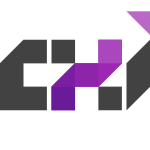 CHI-2014-ThreattMGWBH #design #evaluation #process
CHI-2014-ThreattMGWBH #design #evaluation #process- An assistive robotic table for older and post-stroke adults: results from participatory design and evaluation activities with clinical staff (AT, JM, KEG, IDW, JOB, SH), pp. 673–682.
 HCI-AS-2014-SjolinderEBFHSNB #approach #development #multi
HCI-AS-2014-SjolinderEBFHSNB #approach #development #multi- A Multi-disciplinary Approach in the Development of a Stroke Rehabilitation Tool (MS, ME, ILB, MF, PH, DS, SN, JB), pp. 351–362.
 ICPR-2014-GaoWXSZ #recognition #representation
ICPR-2014-GaoWXSZ #recognition #representation- Stroke Bank: A High-Level Representation for Scene Character Recognition (SG, CW, BX, CS, ZZ), pp. 2909–2913.
 ICPR-2014-LiuZZL #detection #realtime
ICPR-2014-LiuZZL #detection #realtime- Real-Time Scene Text Detection Based on Stroke Model (YL, DZ, YZ, SL), pp. 3116–3120.
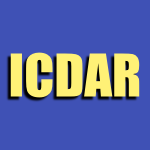 ICDAR-2013-HassaineAB #contest
ICDAR-2013-HassaineAB #contest- ICDAR 2013 Competition on Handwriting Stroke Recovery from Offline Data (AH, SAM, AB), pp. 1412–1416.
 ICDAR-2013-LiMVC #distance #multi #optimisation
ICDAR-2013-LiMVC #distance #multi #optimisation- A Multi-stroke Dynamic Time Warping Distance Based on A* Optimization (JL, HM, CVG, ZC), pp. 1330–1334.
 ICDAR-2013-LiPXW #analysis #consistency #online #order #verification
ICDAR-2013-LiPXW #analysis #consistency #online #order #verification- A Stroke Order Verification Method for On-Line Handwritten Chinese Characters Based on Tempo-spatial Consistency Analysis (RL, LP, EX, NW), pp. 999–1003.
 ICDAR-2013-LuTLGWW #image #segmentation #tablet
ICDAR-2013-LuTLGWW #image #segmentation #tablet- Stroke-Based Character Segmentation of Low-Quality Images on Ancient Chinese Tablet (XL, ZT, YL, LG, TW, ZW), pp. 240–244.
 ICDAR-2013-PengCSPN #documentation
ICDAR-2013-PengCSPN #documentation- Exploiting Stroke Orientation for CRF Based Binarization of Historical Documents (XP, HC, KS, RP, PN), pp. 1034–1038.
 ICDAR-2013-Ramirez-OrtegonMRC #documentation #metric
ICDAR-2013-Ramirez-OrtegonMRC #documentation #metric- An Objective Method to Evaluate Stroke-Width Measures for Binarized Documents (MARO, VM, RR, EC), pp. 175–179.
 ICDAR-2013-TejaN #online #recognition #representation
ICDAR-2013-TejaN #online #recognition #representation- A Ballistic Stroke Representation of Online Handwriting for Recognition (SPT, AMN), pp. 857–861.
 ICDAR-2013-WangLSL #segmentation
ICDAR-2013-WangLSL #segmentation- Triangular Mesh Based Stroke Segmentation for Chinese Calligraphy (XW, XL, LS, ML), pp. 1155–1159.
 CHI-2013-BoulangerBGKSTSDB
CHI-2013-BoulangerBGKSTSDB- Stroke rehabilitation with a sensing surface (CNB, AB, LdG, AK, KS, RT, ZS, PHD, SB), pp. 1243–1246.
 CHI-2013-VatavuCG #gesture #scalability
CHI-2013-VatavuCG #gesture #scalability- Small, medium, or large?: estimating the user-perceived scale of stroke gestures (RDV, GC, LG), pp. 277–280.
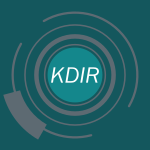 KDIR-KMIS-2013-Stachurska #information management #question
KDIR-KMIS-2013-Stachurska #information management #question- Knowledge Management in Culture — A Flight of Fancy, or a Stroke of Genius? (IS), pp. 526–531.
 CHI-2012-AlankusK #game studies #video
CHI-2012-AlankusK #game studies #video- Reducing compensatory motions in video games for stroke rehabilitation (GA, CK), pp. 2049–2058.
 CHI-2012-TuRZ #comparative #evaluation #gesture
CHI-2012-TuRZ #comparative #evaluation #gesture- A comparative evaluation of finger and pen stroke gestures (HT, XR, SZ), pp. 1287–1296.
 ICML-2012-XieHS #approach #automation #generative #learning
ICML-2012-XieHS #approach #automation #generative #learning- Artist Agent: A Reinforcement Learning Approach to Automatic Stroke Generation in Oriental Ink Painting (NX, HH, MS), p. 139.
 ICPR-2012-ChowdhuryBP #detection #using
ICPR-2012-ChowdhuryBP #detection #using- Scene text detection using sparse stroke information and MLP (ARC, UB, SKP), pp. 294–297.
 ICPR-2012-LiL #detection
ICPR-2012-LiL #detection- Scene text detection via stroke width (YL, HL), pp. 681–684.
 ICPR-2012-MujumdarVK #framework #multi #novel #segmentation #using
ICPR-2012-MujumdarVK #framework #multi #novel #segmentation #using- A novel framework for segmentation of stroke lesions in Diffusion Weighted MRI using multiple b-value data (SM, RV, LTK), pp. 3762–3765.
 ICPR-2012-OReillyP
ICPR-2012-OReillyP- Looking for the brain stroke signature (CO, RP), pp. 1811–1814.
 ICPR-2012-TanLZ #dataset
ICPR-2012-TanLZ #dataset- The dataset system of Economic Dispute handwritten (DSEDH) based on stroke shape and structure features (JT, JHL, XXZ), pp. 661–664.
 ICDAR-2011-AgrawalD #documentation #image
ICDAR-2011-AgrawalD #documentation #image- Stroke-Like Pattern Noise Removal in Binary Document Images (MA, DSD), pp. 17–21.
 ICDAR-2011-LiwickiAUIOK #online #reliability
ICDAR-2011-LiwickiAUIOK #online #reliability- Reliable Online Stroke Recovery from Offline Data with the Data-Embedding Pen (ML, AY, SU, MI, SO, KK), pp. 1384–1388.
 ICDAR-2011-NguyenCO #approach #classification
ICDAR-2011-NguyenCO #approach #classification- Bags of Strokes Based Approach for Classification and Indexing of Drop Caps (TTHN, MC, JMO), pp. 349–353.
 ICDAR-2011-WangHL #embedded #novel #segmentation
ICDAR-2011-WangHL #embedded #novel #segmentation- A Novel Method for Embedded Text Segmentation Based on Stroke and Color (XW, LH, CL), pp. 151–155.
 ICDAR-2011-YiT #detection #image #word
ICDAR-2011-YiT #detection #image #word- Text Detection in Natural Scene Images by Stroke Gabor Words (CY, YT), pp. 177–181.
 ICDAR-2011-ZanibbiPMVB #metric #performance
ICDAR-2011-ZanibbiPMVB #metric #performance- Stroke-Based Performance Metrics for Handwritten Mathematical Expressions (RZ, AP, HM, CVG, DB), pp. 334–338.
 CHI-2011-BalaamEFRHWNAHRMB #design #motivation
CHI-2011-BalaamEFRHWNAHRMB #design #motivation- Motivating mobility: designing for lived motivation in stroke rehabilitation (MB, SRE, GF, TR, AMH, AW, TN, LA, EH, IR, SM, JHB), pp. 3073–3082.
 CHI-2011-NiBN #gesture #interface #named
CHI-2011-NiBN #gesture #interface #named- AirStroke: bringing unistroke text entry to freehand gesture interfaces (TN, DAB, CN), pp. 2473–2476.
 DUXU-v1-2011-Schmid #analysis #development #feedback #learning
DUXU-v1-2011-Schmid #analysis #development #feedback #learning- Development of an Augmented Feedback Application to Support Motor Learning after Stroke: Requirement Analysis (SS), pp. 305–314.
 HCI-UA-2011-FriedmanRB #interactive #realtime
HCI-UA-2011-FriedmanRB #interactive #realtime- A Real-Time Interactive MIDI Glove for Domicile Stroke Rehabilitation (NF, DJR, MB), pp. 151–158.
 HCI-UA-2011-HarleyRGHB #design #game studies #interactive
HCI-UA-2011-HarleyRGHB #design #game studies #interactive- The Design of an Interactive Stroke Rehabilitation Gaming System (LH, SR, MG, SH, DFB), pp. 167–173.
 CASE-2010-GengAXJ #case study #process
CASE-2010-GengAXJ #case study #process- Experimental study of Magnetic Resonance Imaging examination reservation process for stroke patients (NG, VA, XX, ZJ), pp. 774–779.
 CHI-2010-AlankusLMK #game studies #towards
CHI-2010-AlankusLMK #game studies #towards- Towards customizable games for stroke rehabilitation (GA, AL, MM, CK), pp. 2113–2122.
 CHI-2010-BaillyLG #linear #multi
CHI-2010-BaillyLG #linear #multi- Finger-count & radial-stroke shortcuts: 2 techniques for augmenting linear menus on multi-touch surfaces (GB, EL, YG), pp. 591–594.
 ICPR-2010-BharathM #empirical #on the #online #recognition #word
ICPR-2010-BharathM #empirical #on the #online #recognition #word- On the Significance of Stroke Size and Position for Online Handwritten Devanagari Word Recognition: An Empirical Study (AB, SM), pp. 2033–2036.
 ICPR-2010-BlondelSU #learning #online #recognition
ICPR-2010-BlondelSU #learning #online #recognition- Unsupervised Learning of Stroke Tagger for Online Kanji Handwriting Recognition (MB, KS, KU), pp. 1973–1976.
 KDD-2010-KhoslaCLCHL #approach #machine learning #predict
KDD-2010-KhoslaCLCHL #approach #machine learning #predict- An integrated machine learning approach to stroke prediction (AK, YC, CCYL, HKC, JH, HL), pp. 183–192.
 CASE-2009-ParasuramanOG #development
CASE-2009-ParasuramanOG #development- Development of robot assisted stroke rehabilitation system of human upper limb (SP, AWO, VG), pp. 256–261.
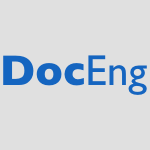 DocEng-2009-GormishPGB #documentation
DocEng-2009-GormishPGB #documentation- An e-writer for documents plus strokes (MJG, KWP, KG, JB), pp. 157–160.
 ICDAR-2009-DingDJ #online #recognition
ICDAR-2009-DingDJ #online #recognition- An Investigation of Imaginary Stroke Techinique for Cursive Online Handwriting Chinese Character Recognition (KD, GD, LJ), pp. 531–535.
 ICDAR-2009-ElbaatiBKEAA #recognition #using
ICDAR-2009-ElbaatiBKEAA #recognition #using- Arabic Handwriting Recognition Using Restored Stroke Chronology (AE, HB, MK, AE, HEA, AMA), pp. 411–415.
 ICDAR-2009-GolubitskyW #multi #online #orthogonal #recognition
ICDAR-2009-GolubitskyW #multi #online #orthogonal #recognition- Online Recognition of Multi-Stroke Symbols with Orthogonal Series (OG, SMW), pp. 1265–1269.
 ICDAR-2009-KatayamaUS #order #probability
ICDAR-2009-KatayamaUS #order #probability- Stochastic Model of Stroke Order Variation (YK, SU, HS), pp. 803–807.
 ICDAR-2009-SharmaKS #online #recognition #word
ICDAR-2009-SharmaKS #online #recognition #word- Rearrangement of Recognized Strokes in Online Handwritten Gurmukhi Words Recognition (AS, RK, RKS), pp. 1241–1245.
 CHI-2009-AppertZ #tool support #using
CHI-2009-AppertZ #tool support #using- Using strokes as command shortcuts: cognitive benefits and toolkit support (CA, SZ), pp. 2289–2298.
 CHI-2009-SakamotoHII #interface #sketching
CHI-2009-SakamotoHII #interface #sketching- Sketch and run: a stroke-based interface for home robots (DS, KH, MI, TI), pp. 197–200.
 HCI-NIMT-2009-KoudaKS #design #interface #using
HCI-NIMT-2009-KoudaKS #design #interface #using- Motion Stroke-A Tablet-Based Interface for Motion Design Tool Using Drawing (HK, IK, KS), pp. 821–829.
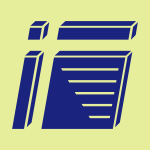 ICEIS-J-2009-ChangS #analysis #classification #performance
ICEIS-J-2009-ChangS #analysis #classification #performance- Fast Unsupervised Classification for Handwritten Stroke Analysis (WDC, JS), pp. 918–927.
 CASE-2008-Andoh #identification #using
CASE-2008-Andoh #identification #using- Coulomb friction identification for mechatronic servo systems with limited strokes using two reference inputs (FA), pp. 265–272.
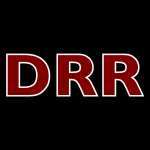 DRR-2008-DolegaAA #identification
DRR-2008-DolegaAA #identification- Stroke frequency descriptors for handwriting-based writer identification (BD, GA, SA), p. 68150.
 ICPR-2008-VillS #analysis #automation #classification
ICPR-2008-VillS #analysis #automation #classification- Automated stroke ending analysis for drawing tool classification (MCV, RS), pp. 1–4.
 ICPR-2008-YuHL #modelling
ICPR-2008-YuHL #modelling- Double-edge-model based character stroke extraction from complex backgrounds (JY, LH, CL), pp. 1–4.
 ICDAR-2007-ChangS #online #verification
ICDAR-2007-ChangS #online #verification- Modified Dynamic Time Warping for Stroke-Based On-line Signature Verification (WC, JS), pp. 724–728.
 ICDAR-2007-JayaramanSC #approach #composition #recognition
ICDAR-2007-JayaramanSC #approach #composition #recognition- Modular Approach to Recognition of Strokes in Telugu Script (AJ, CCS, VSC), pp. 501–505.
 ICDAR-2007-LiuJ #optimisation
ICDAR-2007-LiuJ #optimisation- Character Stroke Extraction Based on B-spline Curve Matching by Constrained Alternating Optimization (XL, YJ), pp. 13–17.
 ICDAR-2007-LuLT #categorisation #identification
ICDAR-2007-LuLT #categorisation #identification- Identification of Latin-Based Languages through Character Stroke Categorization (SJL, LL, CLT), pp. 352–356.
 ICDAR-2007-OtaYSS #online #recognition
ICDAR-2007-OtaYSS #online #recognition- Online Handwritten Kanji Recognition Based on Inter-stroke Grammar (IO, RY, SS, SS), pp. 1188–1192.
 ICDAR-2007-SubramanianNDC #detection
ICDAR-2007-SubramanianNDC #detection- Character-Stroke Detection for Text-Localization and Extraction (KS, PN, MD, DAC), pp. 33–37.
 ICDAR-2007-SuZHZ07a #detection
ICDAR-2007-SuZHZ07a #detection- Skew Detection for Chinese Handwriting by Horizontal Stroke Histogram (THS, TWZ, HJH, YZ), pp. 899–903.
 ICDAR-2007-ZhouLQA #classification #markov #random
ICDAR-2007-ZhouLQA #classification #markov #random- Text/Non-text Ink Stroke Classification in Japanese Handwriting Based on Markov Random Fields (XDZ, CLL, SQ, ÉA), pp. 377–381.
 CHI-2007-CaoZ #gesture #modelling #performance
CHI-2007-CaoZ #gesture #modelling #performance- Modeling human performance of pen stroke gestures (XC, SZ), pp. 1495–1504.
 CHI-2007-KristenssonZ #gesture #using
CHI-2007-KristenssonZ #gesture #using- Command strokes with and without preview: using pen gestures on keyboard for command selection (POK, SZ), pp. 1137–1146.
 CASE-2006-BeghiLPS #black box #modelling #prototype
CASE-2006-BeghiLPS #black box #modelling #prototype- Black-box modeling of a Two-Stroke Racing Motorcycle Engine for Virtual Prototyping Applications (AB, ML, SP, DS), pp. 280–285.
 CHI-2006-ZhaoAH #multi #using
CHI-2006-ZhaoAH #multi #using- Zone and polygon menus: using relative position to increase the breadth of multi-stroke marking menus (SZ, MA, KH), pp. 1077–1086.
 ICPR-v1-2006-ZengL #markov #random #segmentation #using
ICPR-v1-2006-ZengL #markov #random #segmentation #using- Stroke Segmentation of Chinese Characters Using Markov Random Fields (JZ, ZQL), pp. 868–871.
 ICPR-v1-2006-ZhuWD #documentation #image
ICPR-v1-2006-ZhuWD #documentation #image- Document Image Binarization Based on Stroke Enhancement (YZ, CW, RD), pp. 955–958.
 ICPR-v2-2006-CaiUS #algorithm #online #performance #recognition
ICPR-v2-2006-CaiUS #algorithm #online #performance #recognition- An Efficient Radical-Based Algorithm for Stroke-Order-Free Online Kanji Character Recognition (WC, SU, HS), pp. 986–989.
 ICPR-v2-2006-KimLKK #image #recognition #verification #video
ICPR-v2-2006-KimLKK #image #recognition #verification #video- Stroke Verification with Gray-level Image for Hangul Video Text Recognition (JK, SL, YK, JHK), pp. 1074–1077.
 ICPR-v2-2006-QiaoY06a #bidirectional #image #multi #using
ICPR-v2-2006-QiaoY06a #bidirectional #image #multi #using- Recover Writing Trajectory from Multiple Stroked Image Using Bidirectional Dynamic Search (YQ, MY), pp. 970–973.
 ICPR-v2-2006-Sun06a #multi #recognition #using
ICPR-v2-2006-Sun06a #multi #recognition #using- Multi-Linguistic Optical Font Recognition Using Stroke Templates (HMS), pp. 889–892.
 ICPR-v3-2006-AlahariPJ #learning #online #recognition
ICPR-v3-2006-AlahariPJ #learning #online #recognition- Learning Mixtures of Offline and Online features for Handwritten Stroke Recognition (KA, SLP, CVJ), pp. 379–382.
 ICDAR-2005-BouterucheAR #gesture #recognition
ICDAR-2005-BouterucheAR #gesture #recognition- Handwritten Gesture Recognition Driven by the Spatial Context of Strokes (FB, ÉA, NR), pp. 1221–1225.
 ICDAR-2005-LongJ #hybrid #recognition
ICDAR-2005-LongJ #hybrid #recognition- Hybrid Recognition for One Stroke Style Cursive Handwriting Characters (TL, LJ), pp. 232–236.
 ICDAR-2005-PervouchineLM
ICDAR-2005-PervouchineLM- Three-stage Handwriting Stroke Extraction Method with Hidden Loop Recovery (VP, GL, KM), pp. 307–311.
 ICDAR-2005-QiaoY #approach #image #novel #order
ICDAR-2005-QiaoY #approach #image #novel #order- A Novel Approach to Recover Writing Order From Single Stroke Offline Handwritten Images (YQ, MY), pp. 227–231.
 ICDAR-2005-YinYW #online #programming #segmentation
ICDAR-2005-YinYW #online #programming #segmentation- Online Segmentation of Freehand Stroke by Dynamic Programming (YL, YY, LW), pp. 197–201.
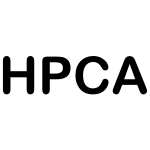 HPCA-2005-HasanJVB #smt
HPCA-2005-HasanJVB #smt- Heat Stroke: Power-Density-Based Denial of Service in SMT (JH, AJ, TNV, CEB), pp. 166–177.
 ICPR-v2-2004-KovacsS #performance
ICPR-v2-2004-KovacsS #performance- Efficient Coding of Stroke-Rendered Paintings (LK, TS), pp. 835–838.
 ICPR-v2-2004-SuW #normalisation #using
ICPR-v2-2004-SuW #normalisation #using- Decomposing Chinese Characters into Stroke Segments Using SOGD Filters and Orientation Normalization (YMS, JFW), pp. 351–354.
 ICPR-v4-2004-ZhangLT #analysis #image #recognition #using #word
ICPR-v4-2004-ZhangLT #analysis #image #recognition #using #word- Italic Font Recognition Using Stroke Pattern Analysis on Wavelet Decomposed Word Images (LZ, YL, CLT), pp. 835–838.
 ICDAR-2003-NakaiSS #generative #recognition #taxonomy
ICDAR-2003-NakaiSS #generative #recognition #taxonomy- Generation of Hierarchical Dictionary for Stroke-order Free Kanji Handwriting Recognition Based on Substroke HMM (MN, HS, SS), pp. 514–518.
 ICPR-v3-2002-Kwon #classification #clustering #using
ICPR-v3-2002-Kwon #classification #clustering #using- Hangul Tree Classifier for Type Clustering Using Horizontal and Vertical Strokes (YBK), pp. 228–231.
 ICPR-v3-2002-LauYT #estimation #sequence
ICPR-v3-2002-LauYT #estimation #sequence- Stroke Extraction and Stroke Sequence Estimation on Signatures (KKL, PCY, YYT), pp. 119–122.
 ICPR-v3-2002-LinT
ICPR-v3-2002-LinT- Off-Line Handwritten Chinese Character Stroke Extraction (FL, XT), p. 249–?.
 ICPR-v3-2002-MaticPW #incremental #named #online #recognition
ICPR-v3-2002-MaticPW #incremental #named #online #recognition- QuickStroke: An Incremental On-Line Chinese Handwriting Recognition System (NPM, JCP, TW), pp. 435–439.
 ICPR-v4-2002-FengWP #agile #analysis #case study #comparative #modelling
ICPR-v4-2002-FengWP #agile #analysis #case study #comparative #modelling- A Comparative Study of Two Velocity ProfIle Models for Rapid Stroke Analysis (CF, AW, RP), p. 52–?.
 ICDAR-2001-ChoK #modelling #network #online #recognition
ICDAR-2001-ChoK #modelling #network #online #recognition- Bayesian Network Modeling of Strokes and their Relationships for On-line Handwriting Recognition (SJC, JHK), pp. 86–90.
 ICDAR-2001-GaoJYH #approach #feature model #recognition
ICDAR-2001-GaoJYH #approach #feature model #recognition- A New Stroke-Based Directional Feature Extraction Approach for Handwritten Chinese Character Recognition (XG, LJ, JY, JH), pp. 635–639.
 ICDAR-2001-HouleBS #using
ICDAR-2001-HouleBS #using- Handwriting Stroke Extraction Using a New XYTC Transform (GFH, KB, MS), pp. 91–95.
 ICDAR-2001-KobayashiNMSA #flexibility #learning #recognition #statistics #using
ICDAR-2001-KobayashiNMSA #flexibility #learning #recognition #statistics #using- Handwritten Numeral Recognition Using Flexible Matching Based on Learning of Stroke Statistics (TK, KN, HM, TS, KA), pp. 612–616.
 ICPR-v2-2000-FanW #approach
ICPR-v2-2000-FanW #approach- A Run-Length Coding Based Approach to Stroke Extraction of Chinese Characters (KCF, WHW), pp. 2565–2568.
 ICPR-v2-2000-GuoDR #detection #using
ICPR-v2-2000-GuoDR #detection #using- Off-Line Skilled Forgery Detection Using Stroke and Sub-Stroke Properties (JKG, DSD, AR), pp. 2355–2358.
 ICPR-v4-2000-CaoT #image
ICPR-v4-2000-CaoT #image- A Model of Stroke Extraction from Chinese Character Images (RC, CLT), pp. 4368–4371.
 ICDAR-1999-ChaSS #algorithm #analysis #approximate #recognition #sequence #string
ICDAR-1999-ChaSS #algorithm #analysis #approximate #recognition #sequence #string- Approximate Stroke Sequence String Matching Algorithm for Character Recognition and Analysis (SHC, YCS, SNS), pp. 53–56.
 ICDAR-1999-CheongKSK #recognition #string
ICDAR-1999-CheongKSK #recognition #string- Handwritten Numeral String Recognition with Stroke Grouping (CEC, HYK, JWS, HK), pp. 745–748.
 ICDAR-1999-KatoY #image #multi #order
ICDAR-1999-KatoY #image #multi #order- Recovery of Drawing Order from Scanned Images of Multi-Stroke Handwriting (YK, MY), pp. 261–264.
 ICDAR-1999-KimKL #recognition
ICDAR-1999-KimKL #recognition- Stroke-guided Pixel Matching for Handwritten Chinese Character Recognition (IJK, JHK, CLL), pp. 665–668.
 ICDAR-1999-SrinivasanRB #component #independence
ICDAR-1999-SrinivasanRB #component #independence- The Independent Components of Characters are “Strokes” (SHS, KRR, SB), pp. 414–417.
 ICDAR-1999-Yamasaki #automation #clustering #generative #online #prototype #recognition
ICDAR-1999-Yamasaki #automation #clustering #generative #online #prototype #recognition- Automatic Prototype Stroke Generation based on Stroke Clustering for On-Line Handwritten Japanese Character Recognition (KY), pp. 673–676.
 ICDAR-1999-YamazakiMK
ICDAR-1999-YamazakiMK- Extraction of Personal Features from Stroke Shape, Writing Pressure and Pen Inclination in Ordinary Characters (YY, YM, NK), pp. 426–429.
 HCI-EI-1999-ChiouW #design #human-computer
HCI-EI-1999-ChiouW #design #human-computer- An Ergonomic Design of EMG Signal Controlled HCI for Stroke Patients (WKC, MKW), pp. 745–749.
 ICPR-1998-MelzerKZ #approach #detection #modelling #parametricity #using
ICPR-1998-MelzerKZ #approach #detection #modelling #parametricity #using- Stroke detection of brush strokes in portrait miniatures using a semi-parametric and a model based approach (TM, PK, EZ), pp. 474–476.
 ICPR-1998-OkamotoNY #online #recognition
ICPR-1998-OkamotoNY #online #recognition- Direction-change features of imaginary strokes for on-line handwriting character recognition (MO, AN, KY), pp. 1747–1751.
 ICPR-1998-SablatnigKZ #classification #modelling #using
ICPR-1998-SablatnigKZ #classification #modelling #using- Hierarchical classification of paintings using face- and brush stroke models (RS, PK, EZ), pp. 172–174.
 ICPR-1998-Yamasaki #automation #categorisation #clustering #online #recognition
ICPR-1998-Yamasaki #automation #categorisation #clustering #online #recognition- Automatic allograph categorization based on stroke clustering for online handwritten Japanese character recognition (KY), pp. 1150–1152.
 ICPR-1998-ZouY #image
ICPR-1998-ZouY #image- Extracting stroke information in static line images (JJZ, HY), pp. 1142–1144.
 ICDAR-1997-LallicanV #approach #order
ICDAR-1997-LallicanV #approach #order- A Kalman Approach for Stroke Order Recovering from Off-Line Handwriting (PML, CVG), pp. 519–523.
 ICDAR-1997-LeeWH #integration #multi
ICDAR-1997-LeeWH #integration #multi- Integration of Multiple Levels of Contour Information for Chinese-Character Stroke Extraction (CL, BW, WCH), pp. 584–587.
 ICDAR-1997-LiuHS #recognition #robust #segmentation
ICDAR-1997-LiuHS #recognition #robust #segmentation- Robust Stroke Segmentation Method for Handwritten Chinese Character Recognition (KL, YSH, CYS), p. 211–?.
 ICDAR-1997-NagasakiYN #behaviour #recognition
ICDAR-1997-NagasakiYN #behaviour #recognition- The Behavior of Dynamic Relaxation in an Elastic Stroke Model for Character Recognition (TN, TY, MN), pp. 16–22.
 ICDAR-1997-TonouchiK #algorithm #online #recognition #using
ICDAR-1997-TonouchiK #algorithm #online #recognition #using- An on-line Japanese character recognition method using length-based stroke correspondence algorithm (YT, AK), pp. 633–636.
 ICDAR-1997-Wirtz #prototype #verification
ICDAR-1997-Wirtz #prototype #verification- Average prototypes for stroke-based signature verification (BW), pp. 268–272.
 ICPR-1996-ChenLC #analysis #classification #sequence #using
ICPR-1996-ChenLC #analysis #classification #sequence #using- Handwritten Chinese character analysis and preclassification using stroke structural sequence (ZC, CWL, RHC), pp. 89–93.
 ICPR-1996-LiuCC #graph #online #order #recognition #relational #using
ICPR-1996-LiuCC #graph #online #order #recognition #relational #using- Stroke order and stroke number free on-line Chinese character recognition using attributed relational graph matching (JL, WkC, MMYC), pp. 259–263.
 ICPR-1996-WakaharaNMO #online #recognition #using
ICPR-1996-WakaharaNMO #online #recognition #using- On-line cursive Kanji character recognition using stroke-based affine transformation (TW, NN, SM, KO), pp. 204–209.
 SAC-1996-LeungC #network
SAC-1996-LeungC #network- A stroke-order free Chinese handwriting input system based on relative stroke positions and back-propagation networks (WnL, KsC), pp. 22–27.
 ICDAR-v1-1995-AbuhaibaDH
ICDAR-v1-1995-AbuhaibaDH- Line extraction and stroke ordering of text pages (ISIA, SD, MJJH), pp. 390–393.
 ICDAR-v1-1995-Wirtz #verification
ICDAR-v1-1995-Wirtz #verification- Stroke-based time warping for signature verification (BW), pp. 179–182.
 ICDAR-v2-1995-HuangRB
ICDAR-v2-1995-HuangRB- Strokes recovering from static handwriting (WH, GR, ZB), pp. 861–864.
 ICDAR-v2-1995-PriviteraP #word
ICDAR-v2-1995-PriviteraP #word- A system for scanning and segmenting cursively handwritten words into basic strokes (CMP, RP), pp. 1047–1050.
 ICDAR-v2-1995-WakaharaSNMO #online #problem #recognition
ICDAR-v2-1995-WakaharaSNMO #online #problem #recognition- On-line cursive Kanji character recognition as stroke correspondence problem (TW, AS, NN, SM, KO), pp. 1059–1064.
 ICDAR-1993-Bai #multi #recognition #using
ICDAR-1993-Bai #multi #recognition #using- Multifont Chinese character recognition using side-stroke-end feature (GB), pp. 794–797.
 ICDAR-1993-ChangCDHK #segmentation
ICDAR-1993-ChangCDHK #segmentation- Stroke segmentation as a basis for structural matching of Chinese characters (FC, YCC, HSD, WLH, CIK), pp. 35–40.
 ICDAR-1993-WangO #automation #data-driven #database #generative
ICDAR-1993-WangO #automation #data-driven #database #generative- Automated generation of Chinese character structure data based on extracting the strokes (JHW, SO), pp. 806–809.
 ICDAR-1993-ZidouriCS #classification #documentation #image
ICDAR-1993-ZidouriCS #classification #documentation #image- Classification of compound document image patterns by MCR stroke index (ABCZ, SC, MS), pp. 753–756.
 LFP-1986-ClackJ #reduction
LFP-1986-ClackJ #reduction- The Four-Stroke Reduction Engine (CDC, SLPJ), pp. 220–232.
 CHI-2014-ThreattMGWBH #design #evaluation #process
CHI-2014-ThreattMGWBH #design #evaluation #process HCI-AS-2014-SjolinderEBFHSNB #approach #development #multi
HCI-AS-2014-SjolinderEBFHSNB #approach #development #multi ICPR-2014-GaoWXSZ #recognition #representation
ICPR-2014-GaoWXSZ #recognition #representation ICPR-2014-LiuZZL #detection #realtime
ICPR-2014-LiuZZL #detection #realtime ICDAR-2013-HassaineAB #contest
ICDAR-2013-HassaineAB #contest ICDAR-2013-LiMVC #distance #multi #optimisation
ICDAR-2013-LiMVC #distance #multi #optimisation ICDAR-2013-LiPXW #analysis #consistency #online #order #verification
ICDAR-2013-LiPXW #analysis #consistency #online #order #verification ICDAR-2013-LuTLGWW #image #segmentation #tablet
ICDAR-2013-LuTLGWW #image #segmentation #tablet ICDAR-2013-PengCSPN #documentation
ICDAR-2013-PengCSPN #documentation ICDAR-2013-Ramirez-OrtegonMRC #documentation #metric
ICDAR-2013-Ramirez-OrtegonMRC #documentation #metric ICDAR-2013-TejaN #online #recognition #representation
ICDAR-2013-TejaN #online #recognition #representation ICDAR-2013-WangLSL #segmentation
ICDAR-2013-WangLSL #segmentation CHI-2013-BoulangerBGKSTSDB
CHI-2013-BoulangerBGKSTSDB CHI-2013-VatavuCG #gesture #scalability
CHI-2013-VatavuCG #gesture #scalability KDIR-KMIS-2013-Stachurska #information management #question
KDIR-KMIS-2013-Stachurska #information management #question CHI-2012-AlankusK #game studies #video
CHI-2012-AlankusK #game studies #video CHI-2012-TuRZ #comparative #evaluation #gesture
CHI-2012-TuRZ #comparative #evaluation #gesture ICML-2012-XieHS #approach #automation #generative #learning
ICML-2012-XieHS #approach #automation #generative #learning ICPR-2012-ChowdhuryBP #detection #using
ICPR-2012-ChowdhuryBP #detection #using ICPR-2012-LiL #detection
ICPR-2012-LiL #detection ICPR-2012-MujumdarVK #framework #multi #novel #segmentation #using
ICPR-2012-MujumdarVK #framework #multi #novel #segmentation #using ICPR-2012-OReillyP
ICPR-2012-OReillyP ICPR-2012-TanLZ #dataset
ICPR-2012-TanLZ #dataset ICDAR-2011-AgrawalD #documentation #image
ICDAR-2011-AgrawalD #documentation #image ICDAR-2011-LiwickiAUIOK #online #reliability
ICDAR-2011-LiwickiAUIOK #online #reliability ICDAR-2011-NguyenCO #approach #classification
ICDAR-2011-NguyenCO #approach #classification ICDAR-2011-WangHL #embedded #novel #segmentation
ICDAR-2011-WangHL #embedded #novel #segmentation ICDAR-2011-YiT #detection #image #word
ICDAR-2011-YiT #detection #image #word ICDAR-2011-ZanibbiPMVB #metric #performance
ICDAR-2011-ZanibbiPMVB #metric #performance CHI-2011-BalaamEFRHWNAHRMB #design #motivation
CHI-2011-BalaamEFRHWNAHRMB #design #motivation CHI-2011-NiBN #gesture #interface #named
CHI-2011-NiBN #gesture #interface #named DUXU-v1-2011-Schmid #analysis #development #feedback #learning
DUXU-v1-2011-Schmid #analysis #development #feedback #learning HCI-UA-2011-FriedmanRB #interactive #realtime
HCI-UA-2011-FriedmanRB #interactive #realtime HCI-UA-2011-HarleyRGHB #design #game studies #interactive
HCI-UA-2011-HarleyRGHB #design #game studies #interactive CASE-2010-GengAXJ #case study #process
CASE-2010-GengAXJ #case study #process CHI-2010-AlankusLMK #game studies #towards
CHI-2010-AlankusLMK #game studies #towards CHI-2010-BaillyLG #linear #multi
CHI-2010-BaillyLG #linear #multi ICPR-2010-BharathM #empirical #on the #online #recognition #word
ICPR-2010-BharathM #empirical #on the #online #recognition #word ICPR-2010-BlondelSU #learning #online #recognition
ICPR-2010-BlondelSU #learning #online #recognition KDD-2010-KhoslaCLCHL #approach #machine learning #predict
KDD-2010-KhoslaCLCHL #approach #machine learning #predict CASE-2009-ParasuramanOG #development
CASE-2009-ParasuramanOG #development DocEng-2009-GormishPGB #documentation
DocEng-2009-GormishPGB #documentation ICDAR-2009-DingDJ #online #recognition
ICDAR-2009-DingDJ #online #recognition ICDAR-2009-ElbaatiBKEAA #recognition #using
ICDAR-2009-ElbaatiBKEAA #recognition #using ICDAR-2009-GolubitskyW #multi #online #orthogonal #recognition
ICDAR-2009-GolubitskyW #multi #online #orthogonal #recognition ICDAR-2009-KatayamaUS #order #probability
ICDAR-2009-KatayamaUS #order #probability ICDAR-2009-SharmaKS #online #recognition #word
ICDAR-2009-SharmaKS #online #recognition #word CHI-2009-AppertZ #tool support #using
CHI-2009-AppertZ #tool support #using CHI-2009-SakamotoHII #interface #sketching
CHI-2009-SakamotoHII #interface #sketching HCI-NIMT-2009-KoudaKS #design #interface #using
HCI-NIMT-2009-KoudaKS #design #interface #using ICEIS-J-2009-ChangS #analysis #classification #performance
ICEIS-J-2009-ChangS #analysis #classification #performance CASE-2008-Andoh #identification #using
CASE-2008-Andoh #identification #using DRR-2008-DolegaAA #identification
DRR-2008-DolegaAA #identification ICPR-2008-VillS #analysis #automation #classification
ICPR-2008-VillS #analysis #automation #classification ICPR-2008-YuHL #modelling
ICPR-2008-YuHL #modelling ICDAR-2007-ChangS #online #verification
ICDAR-2007-ChangS #online #verification ICDAR-2007-JayaramanSC #approach #composition #recognition
ICDAR-2007-JayaramanSC #approach #composition #recognition ICDAR-2007-LiuJ #optimisation
ICDAR-2007-LiuJ #optimisation ICDAR-2007-LuLT #categorisation #identification
ICDAR-2007-LuLT #categorisation #identification ICDAR-2007-OtaYSS #online #recognition
ICDAR-2007-OtaYSS #online #recognition ICDAR-2007-SubramanianNDC #detection
ICDAR-2007-SubramanianNDC #detection ICDAR-2007-SuZHZ07a #detection
ICDAR-2007-SuZHZ07a #detection ICDAR-2007-ZhouLQA #classification #markov #random
ICDAR-2007-ZhouLQA #classification #markov #random CHI-2007-CaoZ #gesture #modelling #performance
CHI-2007-CaoZ #gesture #modelling #performance CHI-2007-KristenssonZ #gesture #using
CHI-2007-KristenssonZ #gesture #using CASE-2006-BeghiLPS #black box #modelling #prototype
CASE-2006-BeghiLPS #black box #modelling #prototype CHI-2006-ZhaoAH #multi #using
CHI-2006-ZhaoAH #multi #using ICPR-v1-2006-ZengL #markov #random #segmentation #using
ICPR-v1-2006-ZengL #markov #random #segmentation #using ICPR-v1-2006-ZhuWD #documentation #image
ICPR-v1-2006-ZhuWD #documentation #image ICPR-v2-2006-CaiUS #algorithm #online #performance #recognition
ICPR-v2-2006-CaiUS #algorithm #online #performance #recognition ICPR-v2-2006-KimLKK #image #recognition #verification #video
ICPR-v2-2006-KimLKK #image #recognition #verification #video ICPR-v2-2006-QiaoY06a #bidirectional #image #multi #using
ICPR-v2-2006-QiaoY06a #bidirectional #image #multi #using ICPR-v2-2006-Sun06a #multi #recognition #using
ICPR-v2-2006-Sun06a #multi #recognition #using ICPR-v3-2006-AlahariPJ #learning #online #recognition
ICPR-v3-2006-AlahariPJ #learning #online #recognition ICDAR-2005-BouterucheAR #gesture #recognition
ICDAR-2005-BouterucheAR #gesture #recognition ICDAR-2005-LongJ #hybrid #recognition
ICDAR-2005-LongJ #hybrid #recognition ICDAR-2005-PervouchineLM
ICDAR-2005-PervouchineLM ICDAR-2005-QiaoY #approach #image #novel #order
ICDAR-2005-QiaoY #approach #image #novel #order ICDAR-2005-YinYW #online #programming #segmentation
ICDAR-2005-YinYW #online #programming #segmentation HPCA-2005-HasanJVB #smt
HPCA-2005-HasanJVB #smt ICPR-v2-2004-KovacsS #performance
ICPR-v2-2004-KovacsS #performance ICPR-v2-2004-SuW #normalisation #using
ICPR-v2-2004-SuW #normalisation #using ICPR-v4-2004-ZhangLT #analysis #image #recognition #using #word
ICPR-v4-2004-ZhangLT #analysis #image #recognition #using #word ICDAR-2003-NakaiSS #generative #recognition #taxonomy
ICDAR-2003-NakaiSS #generative #recognition #taxonomy ICPR-v3-2002-Kwon #classification #clustering #using
ICPR-v3-2002-Kwon #classification #clustering #using ICPR-v3-2002-LauYT #estimation #sequence
ICPR-v3-2002-LauYT #estimation #sequence ICPR-v3-2002-LinT
ICPR-v3-2002-LinT ICPR-v3-2002-MaticPW #incremental #named #online #recognition
ICPR-v3-2002-MaticPW #incremental #named #online #recognition ICPR-v4-2002-FengWP #agile #analysis #case study #comparative #modelling
ICPR-v4-2002-FengWP #agile #analysis #case study #comparative #modelling ICDAR-2001-ChoK #modelling #network #online #recognition
ICDAR-2001-ChoK #modelling #network #online #recognition ICDAR-2001-GaoJYH #approach #feature model #recognition
ICDAR-2001-GaoJYH #approach #feature model #recognition ICDAR-2001-HouleBS #using
ICDAR-2001-HouleBS #using ICDAR-2001-KobayashiNMSA #flexibility #learning #recognition #statistics #using
ICDAR-2001-KobayashiNMSA #flexibility #learning #recognition #statistics #using ICPR-v2-2000-FanW #approach
ICPR-v2-2000-FanW #approach ICPR-v2-2000-GuoDR #detection #using
ICPR-v2-2000-GuoDR #detection #using ICPR-v4-2000-CaoT #image
ICPR-v4-2000-CaoT #image ICDAR-1999-ChaSS #algorithm #analysis #approximate #recognition #sequence #string
ICDAR-1999-ChaSS #algorithm #analysis #approximate #recognition #sequence #string ICDAR-1999-CheongKSK #recognition #string
ICDAR-1999-CheongKSK #recognition #string ICDAR-1999-KatoY #image #multi #order
ICDAR-1999-KatoY #image #multi #order ICDAR-1999-KimKL #recognition
ICDAR-1999-KimKL #recognition ICDAR-1999-SrinivasanRB #component #independence
ICDAR-1999-SrinivasanRB #component #independence ICDAR-1999-Yamasaki #automation #clustering #generative #online #prototype #recognition
ICDAR-1999-Yamasaki #automation #clustering #generative #online #prototype #recognition ICDAR-1999-YamazakiMK
ICDAR-1999-YamazakiMK HCI-EI-1999-ChiouW #design #human-computer
HCI-EI-1999-ChiouW #design #human-computer ICPR-1998-MelzerKZ #approach #detection #modelling #parametricity #using
ICPR-1998-MelzerKZ #approach #detection #modelling #parametricity #using ICPR-1998-OkamotoNY #online #recognition
ICPR-1998-OkamotoNY #online #recognition ICPR-1998-SablatnigKZ #classification #modelling #using
ICPR-1998-SablatnigKZ #classification #modelling #using ICPR-1998-Yamasaki #automation #categorisation #clustering #online #recognition
ICPR-1998-Yamasaki #automation #categorisation #clustering #online #recognition ICPR-1998-ZouY #image
ICPR-1998-ZouY #image ICDAR-1997-LallicanV #approach #order
ICDAR-1997-LallicanV #approach #order ICDAR-1997-LeeWH #integration #multi
ICDAR-1997-LeeWH #integration #multi ICDAR-1997-LiuHS #recognition #robust #segmentation
ICDAR-1997-LiuHS #recognition #robust #segmentation ICDAR-1997-NagasakiYN #behaviour #recognition
ICDAR-1997-NagasakiYN #behaviour #recognition ICDAR-1997-TonouchiK #algorithm #online #recognition #using
ICDAR-1997-TonouchiK #algorithm #online #recognition #using ICDAR-1997-Wirtz #prototype #verification
ICDAR-1997-Wirtz #prototype #verification ICPR-1996-ChenLC #analysis #classification #sequence #using
ICPR-1996-ChenLC #analysis #classification #sequence #using ICPR-1996-LiuCC #graph #online #order #recognition #relational #using
ICPR-1996-LiuCC #graph #online #order #recognition #relational #using ICPR-1996-WakaharaNMO #online #recognition #using
ICPR-1996-WakaharaNMO #online #recognition #using SAC-1996-LeungC #network
SAC-1996-LeungC #network ICDAR-v1-1995-AbuhaibaDH
ICDAR-v1-1995-AbuhaibaDH ICDAR-v1-1995-Wirtz #verification
ICDAR-v1-1995-Wirtz #verification ICDAR-v2-1995-HuangRB
ICDAR-v2-1995-HuangRB ICDAR-v2-1995-PriviteraP #word
ICDAR-v2-1995-PriviteraP #word ICDAR-v2-1995-WakaharaSNMO #online #problem #recognition
ICDAR-v2-1995-WakaharaSNMO #online #problem #recognition ICDAR-1993-Bai #multi #recognition #using
ICDAR-1993-Bai #multi #recognition #using ICDAR-1993-ChangCDHK #segmentation
ICDAR-1993-ChangCDHK #segmentation ICDAR-1993-WangO #automation #data-driven #database #generative
ICDAR-1993-WangO #automation #data-driven #database #generative ICDAR-1993-ZidouriCS #classification #documentation #image
ICDAR-1993-ZidouriCS #classification #documentation #image LFP-1986-ClackJ #reduction
LFP-1986-ClackJ #reduction









